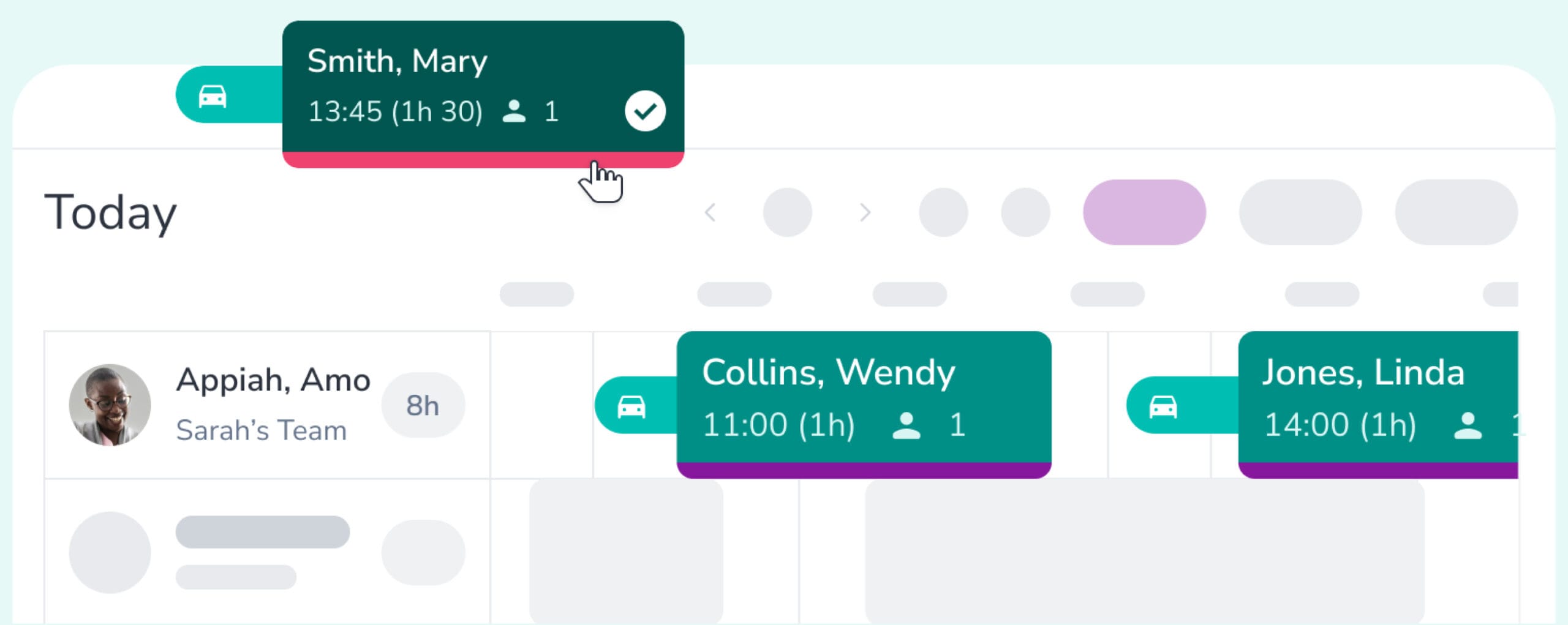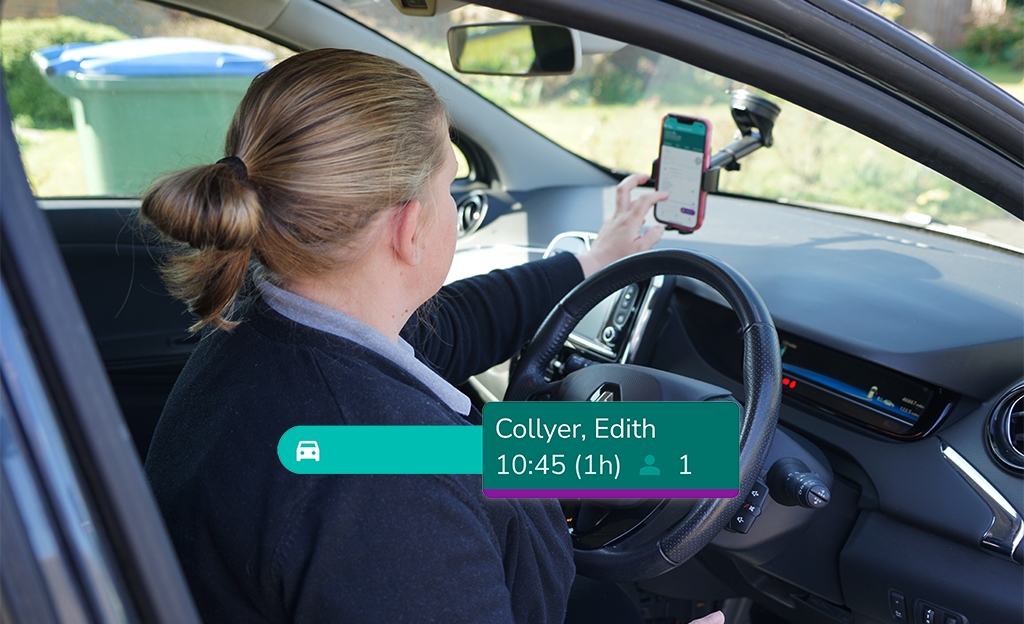Effective Rostering: Key to CQC Compliance in Home Care
Optimising care delivery through smart staff management

How effective rostering supports CQC compliance solutions in home care settings
CQC compliant software
During his address at the HSJ Digital Transformation Summit in February 2022, Sajid Javid stated, “I also want to see a particular focus on social care; we have announced at least £150 million to help drive digitisation in social care, with a target of 80% of social care providers having digital Social Care records by March 2024”.
Many home care service providers have increasingly adopted technology, recognising the advantages of automated processes. The importance of technology has grown significantly, particularly in rostering and allocating visits, especially in light of recent changes that allow employees to structure their working weeks more flexibly. The Employment Relations (Flexible Working) Act 2023 (Commencement) Regulations 2024 are in effect and recognise the importance of flexibility for paid carers because of the unique and often demanding nature of their roles.
The significance of flexible working typifies just why effective home care rostering that supports CQC compliance solutions is so important. Namely, bespoke home care rostering systems that are designed to optimise workforce management, enhance safety, ensure continuity of care and ultimately improve outcomes for all stakeholders while promoting compliance within the care sector. Additionally, ensuring compliance is crucial for meeting the rigorous standards set by regulatory bodies like the CQC.
Regulation: Challenging traditional rostering and workforce management
Home care providers across the UK continue to grapple with persistent staffing challenges, compounded by rising employment costs including the National Living Wage and employer National Insurance contributions.
These regulatory changes highlight the urgent need for providers to strike a careful balance between maintaining operational efficiency and offering flexible, ethical employment practices that support staff and service quality, all while managing financial constraints within the care sector.


Increasing compliance and industry challenges
The industry faces considerable financial pressure, compounded by significant challenges in adhering to regulations and standards while managing compliance. The CQC Regulation 17: Good Governance and Regulation 18: Staffing exemplify the high standards expected of effective leadership in the sector.
Leaders hold the crucial responsibility of ensuring that while meeting the numerous criteria of good governance, there is a strong emphasis on developing processes that enhance both efficiency and safety across services.
Home care can leverage technology to meet the requirements of Regulations 17 and 18. These technologies streamline processes, enhance care quality and provide evidence for governance and risk management.
It is essential for providers to employ a sufficient number of suitably qualified, competent and experienced staff to ensure compliance with all other regulatory requirements outlined in this section of the Health and Social Care Act 2008 (Regulated Activities) Regulations 2014.
Care rostering and staff management for home care providers
Effective care rostering is essential for home care providers to achieve regulatory compliance as it ensures the delivery of safe, efficient and person-centred care.
Here are the key ways in which effective rostering supports compliance:
Ensuring adequate staffing levels
- Rostering systems play a crucial role in ensuring optimal staffing levels to safely and effectively meet the needs of service users. They offer a comprehensive overview of daily visits and staff availability, empowering managers to plan ahead and proactively address any staffing gaps
- This approach aligns with the Care Quality Commission’s (CQC) emphasis on safety and effectiveness, ensuring that care recipients receive timely and sufficient support
Reducing missed or late visits
- Effective rostering is crucial in reducing missed or late visits by enabling the dynamic reallocation of shifts in response to emergencies or absences
One CareLineLive customer saw a 96% reduction in missed calls during the first eight months of using our software - Alerts for unfilled shifts empower managers to swiftly assign available staff, preventing disruptions in continuity of care
- This responsiveness supports the CQC’s requirement for reliable and high-quality care services
Facilitates personalised care
- Capacity planning features ensure that care is customised to the recipient’s location, preferences, wishes and health conditions
- Effective rostering systems align carers with service users by considering their skills, experience and compatibility with each individual’s unique needs
- Person-centred care is a critical aspect of CQC compliance and the Fundamental Standards. This is in line with the CQC’s key questions and quality statements which incorporate ‘we’ and ‘I’ statements
Reducing stress and improving staff morale
- Effective rostering plays a crucial role in alleviating stress for both office and field staff by balancing workloads, optimising travel time and considering staff preferences. This approach not only enhances morale for many lone workers but also brings a culture of cohesiveness and a supportive work environment
- A well-supported workforce aligns with the CQC regulations and goes a long way to evidencing commitment to robust leadership and management practices
Improving risk management and regulatory compliance
- Integrating electronic call monitoring within rostering systems enhances operational efficiency and improves workforce management. Managers receive alerts to anomalies such as late, short or missed visits. Early issue identification allows for swift intervention, mitigating escalation and service user safety. In turn, this ensures consistent quality care
- This proactive strategy aligns with CQC’s commitment to safety, well-being and responsiveness
Streamlines administrative processes
- Automated rostering systems greatly reduce the administrative burdens faced by care coordinators enabling them to concentrate on other essential aspects of their responsibilities. Effectively managing absences, holidays, payroll and billing is crucial. This approach not only guarantees accurate documentation but also ensures adherence to regulatory guidelines
- Robust and effective record-keeping is essential for meeting CQC’s governance requirements under Regulation 17: Good Governance
In an increasingly complex and regulated landscape, the digital transformation of home care services is no longer optional, it is essential. The shift toward effective, technology-driven rostering and workforce management offers providers a powerful solution to meet mounting regulatory demands, optimise operations and most importantly, deliver high-quality, person-centred care.
As the sector continues to face financial pressures, staffing challenges and evolving regulations, embracing rostering and care management tools specific for home care services not only enhances compliance with CQC standards but also fosters a more resilient, responsive and supportive care environment. Providers who invest in modern digital systems, like CareLineLive, are setting the foundation for a more sustainable and effective future in home care.

